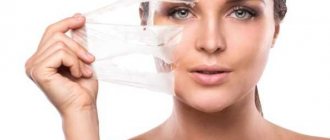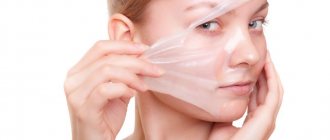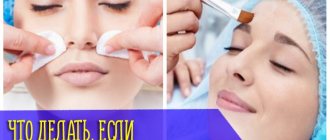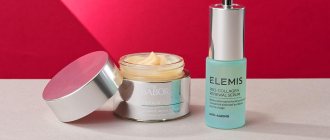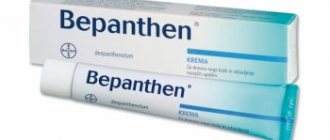Chemical peeling is equally loved by cosmetologists and clients. It allows you to correct involutional changes in the skin caused by temporary and solar aging, eliminates inflammation and hyperkeratosis, lightens pigmentation, stimulates skin renewal, and evens out microrelief.
Modern drugs are peeling systems with complex compositions and auxiliary components, mild action, a shorter rehabilitation period and a more pronounced effect due to the synergy of assets. Gone are the days when clients put up with the need to “hide” from others and wait for the skin to heal. Of course, it is impossible to completely avoid hyperemia and peeling when it comes to deeper peels. However, there is no need to disappear from society for several days.
In accordance with this approach, Mesoderm has updated its usual line of chemical peels, improved the usual formulas and introduced completely new formulations. In addition, the series turned out to be incredibly economical in price, so the products can easily lay claim to the title of one of the best peelings. Let's see what their differences and advantages are.
What are the contraindications?
The procedure is a type of aggressive effect on the epidermis, so it is not allowed for everyone. Contraindications include:
- stage of exacerbation of infectious, viral, bacterial, fungal processes on the skin;
- unhealed wounds, cuts, abrasions, scratches;
- tendency to form keloid scars;
- tanning 2 weeks or less old;
- chronic diseases in the relapse stage;
- oncological pathologies;
- intolerance to the components of peeling preparations;
- pregnancy and lactation;
- recent laser procedures;
- large moles;
- unstable mental state.
The procedure is not performed if the patient is not feeling well: with fever, pain, high blood pressure, colds, or other ailments.
Masks after retinol peeling
After retinol peeling, the skin of the face acquires a yellowish tint, so in your care it is worth using masks that have a whitening effect. The following combinations of components are characterized by this:
- rice flour (1 tablespoon) + low-fat sour cream (2 tablespoons);
- fresh cucumber pulp + 1 teaspoon honey;
- oatmeal powder + water.
Any of these masks should have the appearance of sour cream with a thick consistency. If there are signs of irritation on the skin, or recovery occurs with complications in the form of severe redness of the skin, then a small amount of decoction of chamomile flowers, sage or string can be added to the composition of the products.
On the 3-4th day after the procedure, you will need to add moisturizing masks to your care; the easiest way is to use cosmetic oils. They will soften the skin, prevent excessive peeling and speed up the process of shedding epidermal scales.
How does acid affect the skin?
To obtain the effect of acid peeling, different components are used, depending on the patient’s age, the condition of his skin, the depth and volume of defects. Each acid has its own mechanisms of action:
- Almond – gently penetrates into tissues, capable of breaking down fats. Reduces the appearance of defects, fights free radicals, and has antibacterial properties. Used to treat post-acne and acne scars. Mostly suitable for superficial peeling.
- Milk – optimal moisturizing and whitening. Restores skin turgor and elasticity, removes inflammation, reduces the depth of wrinkles.
- Retinoic – promotes collagen synthesis in the body, removes pigmentation. Smoothes out fine wrinkles and improves skin texture.
- Malic acid is a universal acid used to moisturize and saturate cells with oxygen and nutrients. Stimulates microcirculation.
- Glycolic – care for oily skin. Helps with scars, scars, post-acne, eliminates signs of age-related aging. Evens out the texture and tightens pores.
- Ferulic – helps eliminate the effects of ultraviolet exposure. Gently penetrates the dermis, inhibits the inflammatory process, and prevents redness.
- Salicylic acid – dissolves dead epidermal cells, provides deep cleaning of pores. Normalizes the functioning of the sebaceous glands, activates the production of collagen and elastin.
The type of composition for acid peeling, concentration, and exposure time are determined individually by the cosmetologist, depending on the condition of the skin and the age of the patient.
There are three main types of peeling:
- superficial – shallow effect on the epidermis (fruit, glycolic, almond, retinoic, milk);
- median – affects the dermis (salicylic acid, trichloroacetic acid, azelaic acid);
- deep - affects all layers of the skin, down to connective tissue and fiber (phenolic).
Penetrating into the epidermis, the acid burns damaged, old and keratinized tissue, while simultaneously stimulating high activity of regeneration, cell division and the appearance of new structures. Also, chemical exfoliation of the stratum corneum promotes the accelerated production of your own collagen and elastin.
Important! A deep type of cleansing effect is carried out exclusively in special clinic conditions by a cosmetologist. The use of anesthesia and monitoring of the patient's health condition is required.
Is it possible to apply acid masks after peeling?
After peeling, the facial skin is one large wound surface that needs to be rested, so applying acid masks during this period is strictly prohibited. Doctors do not even allow you to touch the treated dermis again! Acid masks lead to serious complications:
- severe irritation;
- constant presence of a burning sensation;
- burns of delicate skin;
- uncontrollable itching.
Together, this will provoke the development of an inflammatory process, which can result in long-term therapy with the use of specific antibacterial drugs.
Advantages of this procedure
Acid peeling has many advantages:
- effective at any age, provided the correct composition is selected;
- stimulates cell renewal, promotes rejuvenation;
- activates tissue regeneration;
- helps reduce the depth of scars and cicatrices;
- effective in the treatment of acne, acne, comedones;
- restores the structure and oval of the face;
- removes hyperpigmentation, freckles, age spots;
- normalizes a healthy complexion;
- promotes collagen production, thereby increasing skin elasticity and firmness;
- inhibits fading processes;
- reduces the depth of wrinkles, fights sagging;
- reduces pores, normalizes sebum production;
- controls water balance;
- provides full access of oxygen and nutrients to cells;
- stimulates blood circulation and microcirculation;
- restores velvety and smoothness of the skin.
Chemical exfoliation is one of the effective ways to rejuvenate and heal the skin. The technique provides the fastest possible results; it is an excellent alternative to surgical interventions and plastic surgery.
Is it possible to make a mask after peeling the roll?
Roll peeling is done at home and dries the skin as much as possible, so after it you can and should make moisturizing, soothing masks. And there is no 3-day rule, during which any manipulation of the facial skin is contraindicated.
Immediately after washing off the applied peeling agent, you need to apply a centimeter layer of any moisturizing mask to the treated skin - for example, based on fat sour cream or natural yogurt. To these bases add oatmeal, honey or chamomile decoction in equal proportions.
Disadvantages of this procedure
Since exposure to acids on the skin is an aggressive process, this technique has disadvantages:
- a large list of contraindications;
- painful sensations due to chemical burns of the skin;
- long rehabilitation period - for superficial and medium penetration of acids is 10 - 14 days, for deep penetration - up to 2 months;
- possible appearance of hyper- or hypopigmentation - dark or light areas on the skin;
- Usually one procedure is not enough - treatment and rejuvenation must be carried out over a course;
- acids can cause allergies, even if there were no complaints of a reaction before the procedure.
After the session, you should not sunbathe for a long time under the sun or in a solarium, since ultraviolet radiation can cause complications. Therefore, acid exfoliation is not recommended in the summer; it is better in the cold season.
How long after peeling can you make masks?
After peeling, any caring procedures are stopped for 3 days, after which you can make masks, use professional cosmetics and herbal decoctions for washing.
If the procedure for deep cleansing the skin was accompanied by complications, or during the recovery period there is a general increase in body temperature, severe swelling and other side effects, then you cannot use any care masks. At least, such a ban is in place before consulting a cosmetologist.
When can you use paraffin masks after a chemical peel?
Paraffin masks after chemical peeling can be done already on the second day, but only if the procedure itself and the short rehabilitation went without complications. You will need to apply a moisturizer to the skin, then lay a thin gauze napkin on top and apply the product in question on it. Eyelids should be protected with cotton pads.
Composition of paraffin masks: main substance + olive oil + beeswax (proportions 50 g/20 ml/5 g, respectively). If your skin is oily, then the amount of olive oil in the composition should be reduced by 2 times.
Applying a paraffin mask
The paraffin mask is applied in a layer of 0.5-1 cm and remains on the face for 15 minutes. It is recommended to carry out 10-15 such procedures once a day with a break of 24-48 hours.
How is this peeling done?
The first consultation with a cosmetologist includes taking an anamnesis, examination, and identifying contraindications. After this, the specialist selects the acid composition, determines its dosage and exposure time. The doctor also gives recommendations on preparing for the session:
- 20-30 days before the procedure, you need to apply a low-acid composition to the skin, which will be recommended by a specialist - this will help the skin get used to the product, become more receptive, but not experience serious stress. A week before the session, use of the product is stopped.
- Scrubbing should not be used 7 days before the procedure. Such procedures can damage the skin and leave tiny abrasions on it, which can cause complications.
- You must stop tanning within 14 days. Go outside only after applying a cream with a high SPF content.
- People prone to herpes symptoms are recommended to take antiviral drugs.
Then it’s time for the procedure itself:
- Applying products (according to skin type) that remove dirt, dust and degreasing agents.
- The use of local anesthetics - anesthetics in the form of a spray or solution.
- Treatment with a special composition that prepares the surface of the skin for acid to soften the upper layer of the epidermis.
- Applying the preparation with fruit acid - in one or several layers for a certain time.
- Neutralization of acid composition with special means.
- Treatment of the skin with moisturizing, toning, soothing preparations.
The effect will be noticeable after the skin has recovered from exposure to acids. The number of sessions is from 3 to 10 with a weekly interval. The results obtained last for six months with proper care. Subsequently, maintenance procedures may be needed, no more than 2 courses per year.
What time of year can you peel?
There is a misconception that it is advisable to do peeling in winter. In fact, the procedure is carried out at any time of the year. For example, it will help in the spring, when after winter the face looks tired and its color leaves much to be desired.
When carrying out the procedure in spring and summer, you need to protect your skin with sunscreen. It is undesirable to stay in the sun for a long time, as this can lead to the appearance of age spots. Caution should be observed for about a week until the new fresh skin gets stronger and can protect itself from the sun's rays.
Cosmetologist's advice
Usually, after a peeling session, cosmetologists tell patients how to care for injured skin. When to start care, what products to use, how often, depends on the intensity of the mechanical or chemical effect. But there are universal tips that experts give to all clients:
- Treatments can be carried out only 3 days after peeling. If the recovery period is accompanied by swelling, fever and other complications, then masks cannot be used even after the specified time, until the cosmetologist allows it.
- Not every patient can purchase high-quality store-bought masks and other post-procedure care products. You can replace them with cheap pharmaceutical drugs: cream with panthenol to eliminate discomfort, Lyoton gel to moisturize and relieve redness, decongestant ointment Troxevasin, zinc ointment to extinguish inflammation.
- After peeling, you should absolutely not use masks with an acidic composition.
- You can make masks with clay, but only after mild peeling. Take white or blue clay and keep it on your face for no more than 10 minutes.
- To get rid of peeling, it is recommended to treat your face every 3 hours with a cotton swab moistened with grape or other cosmetic oil.
To avoid complications, it is important to properly care for your skin after peeling, and moisturizing and soothing masks help with this. To prevent care from causing harm instead of benefit, it is necessary to follow the recommendations of the cosmetologist and not self-medicate.
Rating
Is it possible to make a clay mask after peeling?
After peeling, you can make a clay mask, but only if the following conditions are met:
- peeling should not be too aggressive;
- use only white or blue clay;
- The time the clay mask stays on the face should be halved and be only 10 minutes.
The mask will be especially effective on oily skin with open pores - clay is able to cleanse and tighten them, which is important after peeling to achieve the result of an “absolutely clean face” . If your facial skin type is oily, then cosmetic clay for preparing a mask is diluted with warm water, but for dry skin types, a fatty fermented milk product is better suited.
After such a mask, you will need to lubricate your face with moisturizer - clay tends to dry out the skin, which can significantly increase post-peeling peeling.
What to do with your face after a mask
After the mask, the face should be washed with warm water without using detergents, then the skin is dried naturally - towels and napkins should not be used so as not to damage the irritated skin by friction.
The next step is applying a moisturizer, which should be present in the procedure regardless of what type of skin is being treated. The cream is applied with soft circular movements; do not rub it in.
We recommend reading about TCA facial peeling. From the article you will learn about the indications and contraindications for TCA peeling, the drugs used, the method of implementation, and the effectiveness of the procedure. And here is more information about how to care for your face after TCA peeling.
After chemical peeling, the skin needs special care, constant hydration and nutrition. Such care guarantees a high-quality result that will please you for about a year or even longer. However, you need to select a treatment and, especially, a product for it, only after consulting with a cosmetologist who did the exfoliation.


